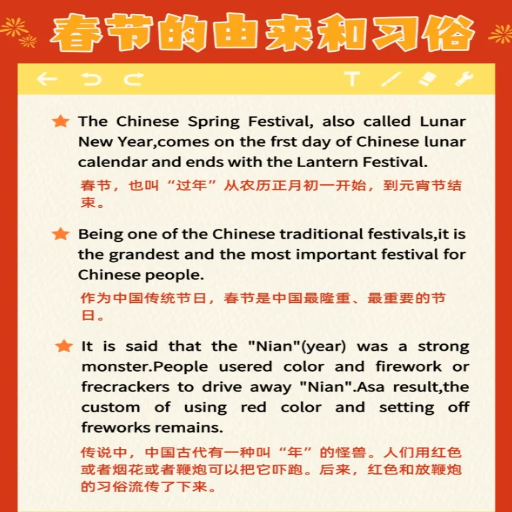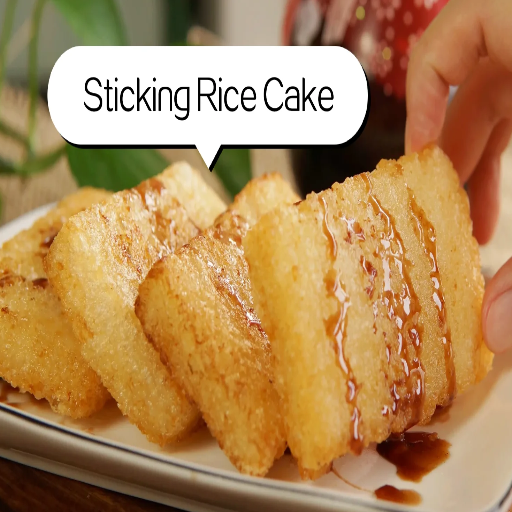The spring season in China brings a blend of renewal of nature, coming back to life, celebrating colorful hues, and festivals that showcase enduring customs. These festivities signal a shift in the seasons and provide a glimpse into the multifaceted cultural tapestry of the nation. The vibrant, growing trees and splendid fireworks mark spring's beginning. China’s culture is steeped in ancient myths and art, which manifests in customs passed down through generations. Anticipate blossoming flowers accompanied by regions preparing for jubilant Chinese lanterns illuminating the sky. This piece provides an in-depth exploration of some of China's most mesmerizing spring festivals. Prepare yourself to learn why all events amid the festival are constructed as joyous tours incorporating art to unlock one’s exploration of the profound themes of Chinese civilization.
What is the Chinese New Year, and how is it celebrated?
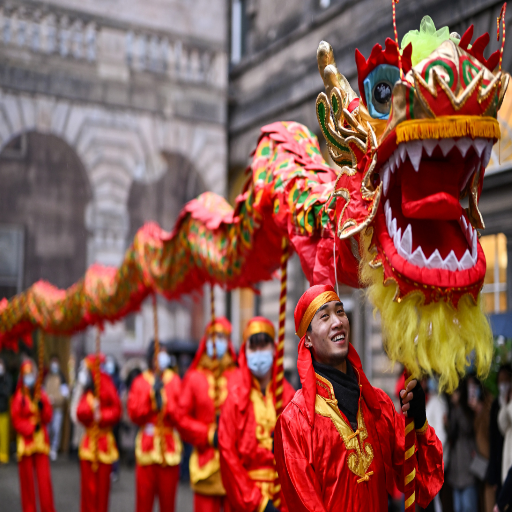
Understanding the Significance of the Lunar New Year
Lunar New Year, or Chinese New Year and Spring Festival, is an essential holiday in Chinese culture. The start of the lunisolar Chinese calendar marks the celebration, which is unlike the Gregorian calendar. Typically, this festival commences in January and ends mid-February. Each year is symbolized by one of the twelve zodiac animals. The ceremony highlights renewal, hope, family reunion, and an overflowing optimism for the new year.
Celebrations ignite with family reunions and continue for 15 days full of festivities. This celebration features house cleaning to remove bad luck, family gatherings, eating together, and decorating with red couplets and lanterns. Certain foods, such as fish, dumplings, and glutinous rice cakes, are served as they symbolize wealth, surplus, and growth. This holiday ends with the Lantern festival filled poetry, dazzling lantern displays, and traditional dragon and lion dances.
The scope of the Lunar New Year celebration has exceeded its customary origins as it is now celebrated across the globe with notable festivities in different nations and communities. The festival preserves the tremendous value of Chinese civilization and humanity’s timeless yearning for happiness and good fortune, from region-wide celebrations to intimate family traditions.
Key Traditions During the Chinese New Year Celebration
The Chinese New Year is marked with various customs rituals centered around family, appreciation, and renewal. One of the most significant traditions is the reunion dinner on New Year’s Eve, where families come together for a lavish meal comprising dumplings, fish, and sticky rice cakes, symbolizing prosperity, abundance, and togetherness. In the days before the holiday, homes are rigorously cleaned to create space for new fortune in the coming year while sweeping out bad luck.
The use of red decorations like couplets, paper cutouts, red lanterns, and others on houses and streets is meant to ward off evil spirits while symbolizing happiness. Children and younger family members are handed red envelopes, “hongbao,” filled with money as an act of goodwill, blessing them for the years to come.
To dispel bad luck and bring prosperity, lively lion and dragon dances accompanied by drums and cymbals are performed. The celebration of the face Nian, a mythical beast, is scared off with loud noises, so firecrackers and fireworks are crucial parts of the celebration.
Engaging in activities like praying for blessings at temple visits, hosting lantern festivals at the end of the celebrations, and sharing greetings for success and happiness illustrate the essence and culture of this festivity. All these essential and symbolic activities strongly relate to restoration, optimism, and harmony. Thus, people of different ages enjoy the Lunar New Year.
How the First Day of the Chinese New Year is Observed
The first day of Spring Festival or Chinese New Year is imbued with enjoyable practices and elaborate rituals designed to ensure an optimistic projection of the year. In anticipation of the day, families deep clean their residences as it is believed to be a cleansing of bad luck or misfortune. No further cleaning is performed on the day of the celebration to preserve chance, fortune, or good luck. People tend to put on new clothes, or any new garments for that matter, and the color red encapsulates preference because of the wealth and prosperity it brings.
As a sign of respect and friendship, many still adhere to paying visits to family members and close friends where warm greetings such as “Happy New Year” celebratory functions take place alongside the exchange of gifts (often red envelopes known as ‘hongbao’) containing money intended to symbolize ‘wealth’ and ‘success’ for the celebratory event. Nian gao (sticky rice cake), fish, and dumplings of all sorts are intended to be eaten on the day of celebration. They are regarded with meanings juxtaposed to, or representing, prosperity, family togetherness, and good health. Red firecrackers are lit in large quantities to provide joy and excitement to the celebration while warding off negative energy.
Many people queue up in temples to offer incense and prayers to show appreciation for the blessings they have received in the past and seek favors for the new year. At the same time, children also take part in bold activities like lion dances or dragon performances that add life to the streets and the community. The focus on family and community alongside traditions makes this celebration a remarkable and joyous start to the Lunar New Year.
What Are the Unique Aspects of the Spring Festival in China?
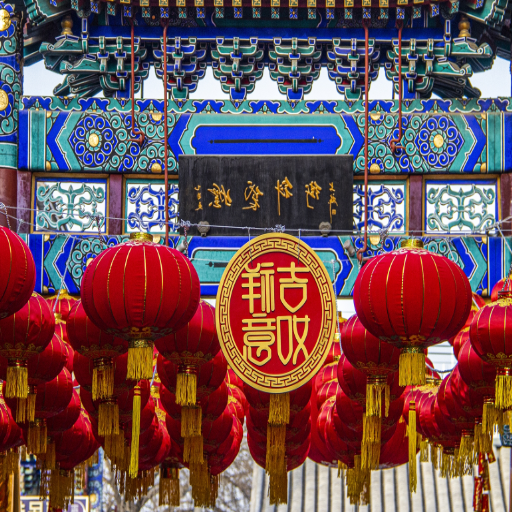
Traditional Foods Associated with the Spring Festival
Like every Spring Festival, it is celebrated in China with traditional delicacies with deep-rooted cultural importance. “Jiaozi,” also known as dumplings, is highly valued in China’s northern regions as it is known to embody wealth and prosperity. This is due to its resemblance to Chinese gold ingots. To preserve traditional values, families prepare dumplings during the celebration, which strengthens bonds and helps in drawing good fortune.
Rich in Chinese culture, "nian gao," or glutinous rice cake, is another tasty dish that translates to “year-high,” which signifies progress, growth, and success. It provides a sweet touch to festive meals and is renowned in different Chinese regions, which portray the multitude of styles in glutinous rice cakes, signifying the diversity of Chinese culinary traditions.
Fish is another essential food consumed during the Spring Festival because “yu” is the word for fish in Chinese, symbolically portraying surplus or abundance. As a centerpiece for the dinner table, fish is typically served whole to signify a prosperous year from start to end. Different ways of cooking fish, steaming, braising, or other methods, will depend on regional variations, which showcase the richness of the culinary traditions in China.
Due to their vibrant colors and the good fortune meanings associated with their names, which phonetically resemble “luck” and “wealth” in Chinese, oranges and tangerines are among the most common fruits on tables. These fruits augment the freshness of the meals that commemorate the holiday and strengthen the anticipation for a fruitful year ahead.
From a historical viewpoint, these foods highlight the synergetic values of family, prosperity, and abundance, making them both wholesome and traditional. These foods, celebrated during the Spring Festival, foster an intergenerational spirit and carry their true meaning.
Festivities and Activities During the Spring Festival
Families and communities celebrate the Spring Festival through various vigorous activities that interface culture with joy. Fireworks and firecrackers are among the most iconic activities of this festival, erupting on the roads and in the sky, marking the dispelling of evil spirits or bad luck. Lion and dragon dances also add special flavor to the festival, where creative and artistic performers bring the symbolic creatures to life with dynamic drumbeats and rhythmic movement.
Homes and shrines are filled with red in the form of lanterns, couplets, and paper cuttings, which symbolize happiness and good fortune. The New Year is also marked with cleaning rituals by many families, which signifies sweeping out old misfortunes and preparing to welcome luck in the form of new opportunities in the year. Family ties are reinforced with friends and relatives' visits, termed ‘New Year’s Greetings’. Exchange of red envelopes stuffed with money conveys blessings and well wishes especially to younger people.
Games and cultural performances are absolutely essential to a festival's success. Temple fairs, folk art displays, and traditional music performances can well celebrate the festive atmosphere and cultural pride. During the Spring Festival, these events are very welcome, and they provide an opportunity for reflection, connection, and hope for the upcoming year.
How the Spring Festival Reflects Chinese Culture
The Spring Festival is a lively manifestation of China's traditions, values, and historical aspects. It fuses modern practices with ancient traditions. It is sociologically significant as ancestor veneration and family get-togethers are characteristic of the festival. People travel far and wide to celebrate their heritage with their families over meals, pay respect, and reminisce about their ancestors. The festival is marked with traditional practices, like giving red envelopes, decorating with auspicious signs, and lion or dragon dances, all of which convey deep meaning and represent prosperity, good fortune, and the warding off of malevolent evils.
On an economic spectrum, the festival is an essential stimulus for domestic consumption in China. Billions are spent yearly on travel, gifts, food, and festive decorations associated with the holiday. There are peak operations in the high-speed rail networks. This is when millions travel to reunite with their families for the most significant human migration in a year. Modern practices like mobile payments have replaced cash during the holiday, showcasing China's ever-changing culture. The festival brings to life the identity of the Chinese culture and aims to unite the people through shared customs and a vision for the future.
How Does Spring in China Transform the Landscape?
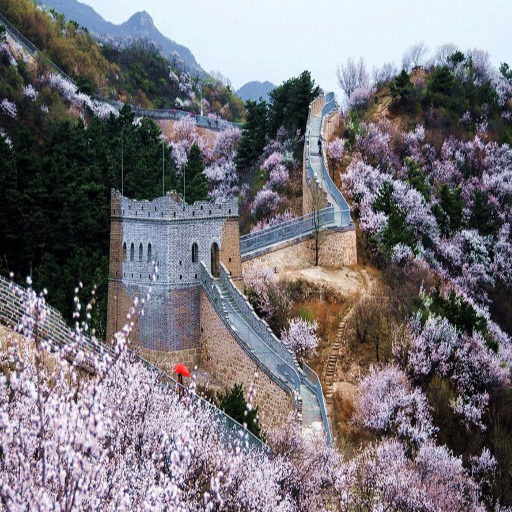
Flora and Fauna: What to Expect in Spring
Spring undergoes a splendid metamorphosis within China, considering that nature wakes up with spectacular movements during this season. Different parts of the country are painted with plum, cherry, and peach blossoms, bursting in the shades of pink, white, and red. Icons such as Wuhan and Beijing have floral exhibitions that attract both residents of the country and tourists because of their exquisite beauty.
During spring, migratory birds such as swans and cranes return to the wetlands and conservation areas, known for being lush. Places like Zhejiang and Yunnan Province have wetlands rich in specific populations of birds, hence making them a perfect location for nature lovers. Beyond that, warmer temperatures foster plant life. In addition to bamboo shoots sprouting in the forest and terraces in Guangxi, the green cover on farmlands also increases. No one can dispute that spring is a season of revival and change, showcasing stunning snatches of the country's natural treasures.
Popular Destinations to Visit in China During Spring
Hangzhou's West Lake: In Hangzhou, West Lake is a picturesque paradise that transforms into a spectacular sight each spring. The region is marked as a UNESCO World Heritage Site. Tourists can enjoy the sight of willow trees and peach blossoms floating around the lake. Boat rides give an exquisite view of traditional Chinese pavilions in the greenery. It is also home to the broken bridge, which is surrounded by shrubs and trees, adding to its enchanting beauty.
Jiuzhaigou Valley, Sichuan: Known for its jaw-dropping natural beauty, Jiuzhaigou comes alive during the spring. During this season, it hosts emerald lakes, vibrant waterfalls, and mountains topped with snow. The enjoyable weather makes it perfect for capturing pictures and hiking. Along with snow, the valley is enhanced with newly sprouted lush greenery and vibrant wildflowers.
Wuyuan, Jiangxi Province: Often dubbed “China’s Most Beautiful Countryside,” Wuyuan is famous for its terraced fields covered with glowing golden rapeseed flowers. During spring, the region transforms into an artist's wonderland. Spring-fed villages enhance the scenic landscape of ancient villages and quaint trails.
Guilin and the Li River: Springtime in Guilin is characterized by the fragrant blooming of Osmanthus and misty karst mountainous regions. Cruise rides down the Li River also boast amazing views. Dramatic peaks flank green landscapes that reflect them in the river, creating unforgettable new views.
Mount Huangshan (Yellow Mountain): Mount Huangshan is a place for year-round tourism because it is home to magnificent hot springs, a sea of clouds, spectacular granite mountain peaks, and jaw-droppingly weird pine trees. Spring further enhances the surreal beauty of Huangshan by adding blooming azaleas alongside greenery. The mountain offers numerous hiking trails, which, along with their panoramic views, provide the best experience during cool and clear mornings that the season is famous for.
Luoping, Yunnan Province: The region of Dabaodan is an epitome of Luoping, which has no comparison when it comes to astonishing plains filled with canola flowers. Every spring, the region is covered in endless expanses of gold stretching to the horizon. A much-needed rural escape from the bustling world, Luoping is a photographer's and nature lovers' paradise, with its karst hills further enhancing the experience.
For landscape diversity, spring is the perfect time to venture out into the country and explore new places. Each offering around the globe provides a new level of awe and tremendous beauty that everyone, from nature lovers to history enthusiasts, would find captivating.
What Are Other Notable Chinese Festivals in Spring?

The Lantern Festival: Celebrating Light and Hope
The Lantern Festival, or Yuan Xiao Jie in Chinese, is observed on the 15th day of the first month of the lunar year. It marks the culmination of the New Year festivities. The festival dates back over 2000 years, and every community in China has colorful lanterns representing unity, hope, and good fortune.
Another key highlight of the festival is the display of intricately designed lanterns, which range from simple crafts to complex mythological, animal, and historical sculptures. Streets, parks, and temples are illuminated with these fantastical displays, and families and guests are pulled together to the festival. Incorporating lantern riddles and games enhances the festivities and celebrates the cleverness in Chinese culture.
Another striking celebration will be enjoying tangyuan. Tangyuan are glutinous rice balls with sweet fillings including sesame, red bean paste, or peanuts. When filled with ingredients such as sesame, red bean paste, or peanuts, the round shape of rice balls symbolizes family completeness and unity, fully embodying the culinary tradition. Today, lion dances, dragon dances, fireworks, and other folk performances are performed during the celebration and enhance the festive mood of the whole community. As such, the Lantern Festival now represents more than just a visual spectacle. It celebrates heritage, culture, community, and the hope of a brighter tomorrow.
The Qingming Festival: Honoring Ancestors and Nature
The Qingming Festival - also called Tomb-Sweeping Day - is a celebrated traditional Chinese holiday that merges revering one’s ancestors and celebrating the wonder of nature during the spring season. The Qingming solar term, which falls around April 4th or 5th, coincides with the festival and signifies ‘clear and bright’ or renewal and growth. During Qingming, loved ones pass on respect and honor the departed by preparing their graves and offering food, tea, and ceremonial paper items. These rites highlight the reverence for ancestors, an integral aspect of Chinese culture.
Apart from the Qingming Festival, the remainder of the holistic interplay between human beings and the ecosystem is still celebrated. People engage in outdoor activities like kite flying, spring hiking, and tree planting, thus boosting their connection to the environment. The Qingming festival also marks seasonal feasts that feature qingtuan, green rice balls made with mugwort, which remind people of the Qingming agricultural roots. Ultimately, the Qingming festival reminds people to reflect on the past while appreciating life’s perpetual cycles.
The Role of Chinese Ethnic Minorities in Spring Festivals
There are 56 ethnic minorities in China, each adding to and diversifying the country's rich cultural heritage. During spring festivals, various customs and traditional practices of celebration and festivity are incorporated by ethnic minority groups and add to the beauty of nature and seasonal celebrations. The Dai people of Yunnan province celebrate a Pouring Water Festival, which symbolizes purification and starting over, showcasing lively dances, fights with water, and rituals at the temples. Miao people also partake in this as it has significant elements, such as the competitions in playing the lusheng, which fosters community, dancing, and merging culture and music.
These festivals often celebrate the ethereal glue that keeps nature and farming together, and agnosticism, like the Zhuang people and their ‘Sanyuesan’ festivity. The celebration's highlight is singing contests, showcasing traditional embroideries and doing other ethnic culinary arts, such as cooking five colored glutinous rice, which is the harmony of diversity. The cultural heritage of minorities is greatly cherished internationally and preserved at the same time. It focuses attention due to the ethnocentric efforts put into cultural tourism. It is central in creating inter-ethnic understanding and nurturing the appreciation of rich culture and more in China.
What travel tips should you consider when visiting China in the spring?

Best Practices for Spring Travel in China
I recommend that anyone traveling to China during the spring should consider packing clothes that can be layered. During spring, the weather tends to be erratic, with warmer days between cool evenings, thus putting on a light sweater or jacket makes it more comfortable as the temperatures shift. A compact umbrella or a raincoat can protect one from getting wet during unanticipated downpours. This is especially true for the southern regions of China that tend to experience spring showers more frequently.
China in the spring is excellent for picturesque sights, which one should consider when planning an itinerary. Locations like the ancient town of Wuzhen and cherry blossom hotspots like Wuhan University and Yuyuantan Park in Beijing are must-sees during this time. However, places tend to get crowded during peak-season holidays like the Qingming Festival, hence it is advisable to make transport and accommodation bookings earlier to avoid issues.
As for me, I never forget to enjoy spring specialties, which include tender bamboo shoots, wild vegetables, and fresh tea leaves, all sourced from places such as Hangzhou. This season brings the chance to enjoy the wonders of nature and culture that China offers, and tasting seasonal delicacies is just a bonus. Ensuring that you are China-ready well in advance, with only a few set plans to cater to spontaneity, one’s lifetime trip will assuredly fall within springtime adventures and experiences in China.
Must-Try Traditional Foods While Traveling
As for the local cultures and what a particular location offers as a travel destination, every type of food has its own story, which is why I have a habit of trying traditional food. Moreover, I believe in learning something new; for me, learning comes best when trying to taste traditional cuisines. A case in point is China, where I have taken it regarding hotpots and can never resist them. The same goes for Chongqing’s hotpot spicy numbing broth. The local ingredients are featured in each style, making their flavor take on distinct forms. Another case in point is Xiaolongbao, soup dumplings, and their counterpart in Shanghai. The love and magnificence poured into ensuring each bite is tender is astonishing.
Aside from traveling, I make it a habit to try out new places, and in doing so, I have noticed that street food is a reliable reminder of everyday activities. There is no doubt that the brilliant diversity and freshness of street cuisine are overwhelming. From mouth watering Jongbing or Chinese crepes which i always get at the rotun start of the day markets or sea food kebabs i get in coastal towns. Aside from savory dishes, I enjoy seasonal sweet delights such as Shaved ice containing mango in warmer regions or tangyuan for fun. The taste I experienced in those moments is something I have and embrace. And as a result, every trip gift I with a vivid culinary experience coupled with an untapped place to explore.
Understanding the Chinese Calendar and Its Festivals
Both cultural practitioners and astronomers regard the lunisolar calendar as distinctive because it intertwines astronomy and culture. Traditionally, the lunar calendar that the Chinese use is known to be a mingled system of solar activities accounting for the position of the sun, as well as the phases of the moon. Unlike the self-sufficient Gregorian calendar, which strictly relies on the sun, the Chinese calendar commences each month on a new moon. The system ensures that both lunar and solar functions are considered, making it an organized and precise structure through which Chinese holidays can be constantly celebrated across the seasons.
One particularly captivating aspect is that it supports many celebrations, each rich in meaning and with a history behind it. For instance, the Chinese New Year celebrates the beginning of the lunar year with family gatherings, special foods, red fire lanterns, and firecrackers representing good fortune and wealth. Likewise, the Mid-Autumn Festival pays attention to the full moon, a time for introspection and thanksgiving, and is shared with mooncakes, which have a deep-rooted meaning based on the season and lore.
As I explored the calendar, I better understood the connection of its celebrations to Chinese legends, farming seasons, and other cultures’ religions. The Dragon Boat Festival is a good example. It celebrates the life of the poet Qu Yuan, but before that, it is also about summertime, with dragon boat races returning as the highlight of this period and consuming zongzi (sticky rice dumplings). By examining these festivals, I have learned much more about Chinese culture and traditions and how the people have always tried to live in harmony with nature.
Frequently Asked Questions (FAQs)
Q: What is the purpose and significance of the Chinese Spring Festival?
A: The Spring Festival in China is synonymous with the Chinese Lunar New Year. It is the most prominent festivity celebrated in China, marking the onset of the New Year according to the Chinese calendar. This period entails family reunions, cultural activities, and feasting that are quintessential to Chinese culture.
Q: How do people who identify as Chinese observe the festival?
A: The Spring Festival is renowned in history for many customs. These include decorating one’s home with couplets, preparing food, hosting family reunions, and setting off fireworks. There is also an essence of optimism that allows individuals to honor ancestors while looking forward to the New Year.
Q: Regarding festivities, why is the lunar calendar important in traditional Chinese festivals?
A: Most traditional festivals, including the Spring Festival and Mid-Autumn Festival, stem from the lunar dates. As such, the lunar calendar is imperative in planning the dates. It is based on the ancient Chinese agricultural cycles and reflects cultural tradition.
Q: What is the date of commencement for the Chinese New Year?
A: The first day of the Chinese New Year is never the same as the previous year’s because it follows the lunar calendar. The dates vary yearly between January 21 and February 20. The celebrations start on the evening before the first day and continue till the Lantern Festival, which takes place on the 15th day of the new year.
Q: In what manner does the Republic of China commemorate the Spring Festival?
A: The Republic of China observes the Spring Festival with cultural customs that align with those celebrated within mainland China. Family reunions, meals together, red packet exchange, and artistic performances are commonplace.
Q: How do New Year's pictures contribute to celebrating the spring festival in China?
A: New Year pictures are traditional art displayed in homes during the Spring Festival. These homes need to be decorated to ensure luck, and these pictures do just that. They bring happiness, eternal fortune, and safety from evil spirits.
Q: Why does the day of the Chinese New Year also spring into action as the Spring Festival?
A: The day of the Chinese New Year is referred to as the Spring Festival, as it marks the conclusion of winter and the onset of spring in synchrony with the traditional Chinese calendar. It celebrates renewal, growth, and the change of the seasons.
Q: What does the phrase Spring Festival couplet mean, and how does it hold cultural significance?
A: Spring festival couplets are essential to the celebration's customary cultural beauty components. These lines are written on bold red paper and pasted around entrances in the hopes of prosperity and joy. A couplet in such form depicts ancient Chinese imaginations alongside its ethos.
Q: In what ways do the ancient Chinese customs of celebrating Spring Festivals differ from how we do now?
A: Many aspects of ancient Chinese customs have evolved into modern practices, including family reunions, iconic dishes, folk customs, and entertainment, including shows. On more festive occasions, people like to exchange greetings electronically or view festivals on screen, which incorporate a mix of traditional and innovative practices.

